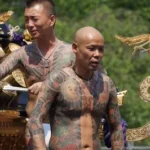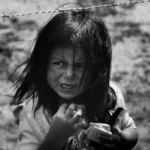Introduction
Popular culture permeates almost every aspect of our daily lives: from the way we dress and the music we listen to, to the trends we follow on social media. It is often taken for granted—an ever-present, subtle force shaping social norms, values, and behaviors. However, as sociologists, we must dig beneath the surface to truly understand popular culture’s origins, functions, and impact on society. This article aims to guide undergraduate students through key sociological insights into popular culture, offering a nuanced look at how it both reflects and shapes the world in which we live. By weaving together multiple theoretical perspectives and examining contemporary societal shifts, we can uncover the intricate web of power, identity, and collective meaning that popular culture encompasses.
The Nature of Popular Culture
Definition and Scope
Broadly speaking, popular culture—sometimes referred to as “pop culture”—encompasses the set of practices, beliefs, and objects that are dominant or prevalent in a society at any given point in time. Unlike “high culture,” which traditionally includes the fine arts, classical music, and literature, popular culture focuses on everyday tastes and practices accessible to the majority. Its scope is vast, covering:
- Television and film
- Music
- Fashion
- Social media trends
- Commercial products (e.g., toys, technology)
Historical Developments
The concept of popular culture has evolved over time, shaped by technological advancements, mass media, and broader socio-political changes. Early forms of popular culture, such as folk tales and carnivals, were relatively localized. Yet, with the advent of the printing press, radio, film, and eventually the internet, the dissemination of cultural products became more rapid and widespread. Modern popular culture is thus both global and instant, transcending geographical boundaries and forging international cultural connections. From the jazz craze of the early 20th century to today’s viral social media challenges, popular culture reflects the shifting zeitgeist of each era.
Theoretical Perspectives
Functionalism
From a functionalist perspective, popular culture serves as a glue binding communities together. Shared experiences—whether through consuming the same TV show or following the same social media influencer—can create a sense of solidarity and collective identity. Functionalists argue that these collective cultural moments reinforce social norms and values by standardizing experiences and shared narratives. Moreover, popular cultural phenomena can act as a pressure valve, offering leisure and amusement that help maintain social equilibrium. Sporting events, for example, can unify diverse groups under a single collective excitement, temporarily mitigating social divides.
Conflict Theory
In contrast, conflict theorists see popular culture as an arena in which dominant social groups impose their values and ideologies on the broader society. According to this view, popular culture is not merely neutral entertainment; it is also a vehicle for reinforcing power structures and perpetuating inequalities. Media conglomerates can exert significant influence over what is consumed and how issues are portrayed, reflecting the interests of the elite rather than those of the public. This can manifest in the underrepresentation of marginalized groups, the promotion of consumerist ideologies, or the normalization of certain political perspectives, thus ensuring the status quo remains in place.
Symbolic Interactionism
Symbolic interactionists emphasize the micro-level interactions that shape and are shaped by popular culture. From this perspective, each individual actively constructs meaning from cultural products. Whether you perceive a new fashion trend as “cool” or “tacky” depends on the interactions you have within your social circles, the symbols associated with the trend, and the contexts within which these symbols are interpreted. In essence, popular culture is continually co-created by individuals who assign varied meanings to symbols, thus making the cultural landscape dynamic and ever-evolving.
The Globalization of Popular Culture
Cultural Homogenization and Hybridization
Globalization has brought with it both cultural homogenization and cultural hybridization. On one hand, large corporations often promote standardized products that yield a global monoculture—think of fast-food chains or blockbuster Hollywood films dominating markets worldwide. On the other hand, local communities adapt and transform these global products, creating new hybridized forms of popular culture. For instance, K-pop—a genre originating in South Korea—incorporates Western pop elements, local folk influences, and a rigorous production culture, resulting in a hybrid form that has gained massive international success. This cross-pollination of styles, sounds, and aesthetics demonstrates how popular culture can be at once uniform yet richly diverse.
Digital Platforms
Digital platforms such as YouTube, TikTok, and Twitter have accelerated the globalization process, turning consumers into content producers. This blurring of lines creates an environment where trends and ideas move fluidly across cultural and national boundaries. Viral challenges, hashtags, and memes become global phenomena within hours, sometimes without a clear originating point. These digital ecosystems enable individuals from different corners of the globe to share their cultural expressions, creating transnational alliances and shifting the power balance in the production of popular culture.
Popular Culture as a Reflection of Social Change
Get the full article AD FREE. Join now for full access to all premium articles.
View Plans & Subscribe Already a member? Log in.














